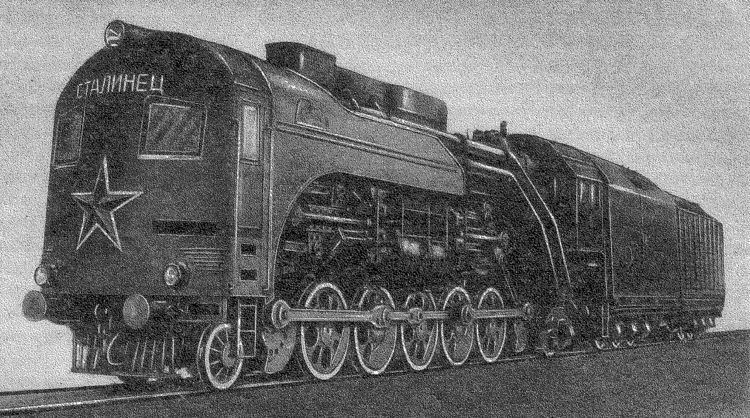 | ||
A steam diesel hybrid locomotive was a railway locomotive with a piston engine which could run on either steam from a boiler or diesel fuel. Examples were built in the United Kingdom, Russia and Italy but the relatively high cost of fuel oil meant that the designs were not pursued.
Contents
Kitson-Still locomotive
In 1926 Kitson and Company, Leeds, built an experimental example for the London and North Eastern Railway, using as their model the Still engine already in use for stationary and marine applications. It was on trial until 1934, but then scrapped. It was designed because a steam engine offered a high starting torque while a diesel engine offered a high fuel efficiency and it was considered desirable to combine the two.
Construction
In outline the machine resembled a conventional 2-6-2T steam locomotive, but it had four pairs of horizontally opposed cylinders mounted longitudinally above the frame and driving a crankshaft placed between them, with the further drivetrain by gears. The cylinders were made double-ended, with one end of each cylinder for steam and the other fitted with a diesel injector. (Some drawings, published in contemporary magazines, show only two pairs of cylinders and it seems that this was one of the design features that was changed during development.) The boiler, with a diameter of only fifty-one inches (130 cm) and a small internal firebox, was mounted above. The driving position was in the usual place behind the boiler and tanks for fuel and water were mounted on the frame at the rear.
Operation
The sequence of operation was to heat the boiler in the normal way, but using fuel oil instead of coal. The start from rest would be made with steam power, but at about five mph (8 km/h) the diesel injectors would be started and the steam turned off. The waste heat from the cylinder jackets and diesel exhaust then maintained the boiler in steam for auxiliary functions (brakes and whistle) and in readiness to supplement the diesel power if required, or for the next start. By using steam for starting, no form of variable transmission was necessary and a permanent reduction geartrain of 1·878 to 1 ratio was fitted.
Overall power output did not compare well with conventional steam locomotives, although the performance on gradients was good because of the gearing. During the trials it was used successfully with coal trains and it proved very efficient in terms of fuel used, because the waste heat from the diesel power was recovered. However its running costs depended on the price differential between coal and oil and this was not favourable. When Kitson & Co. failed in 1934 the LNER handed the machine back to the company's receivers and it was dismantled.
Cristiani compressed steam system
The Italian Cristiani Compressed Steam System used the process of Mechanical vapor recompression. A diesel engine compressed steam which was then fed to conventional steam engine cylinders. The exhaust steam was re-compressed and used again. There must have been a small boiler to generate the initial charge of steam but this is not shown in the diagram.
The steam was used mainly as a transmission system but the locomotive does count as a hybrid because some steam storage was provided. A possible advantage of the system was that it enabled existing steam locomotives to be converted to diesel operation but this did not come to fruition.
Patents for the system were held by Severino Cristiani and Secondo Sacerdole in Italy and it was promoted in England by Captain William Peter Durtnall. A trial was made in England, using two "Paragon" marine petrol engines, under the name "Paragon-Cristiani". The equipment was mounted on a 0-6-0 chassis (works number 3513/1923) built by Hawthorn Leslie and Company. It was not a success and the chassis was converted to a conventional 0-6-0ST named "Stagshaw" which is preserved on the Tanfield Railway.
Russia
Russia built three large experimental locomotives between 1939 and 1949. One used gas produced from anthracite to fuel its internal combustion cylinders and pulverised anthracite to heat the boiler. None of them were successful and they were converted to full steam operation after 1949.
Switzerland
In 1925, Jakob Buchli of Switzerland obtained patent US1559548 for a combined steam and internal-combustion engined locomotive. This differed from the Kitson-Still system in that the steam and internal combustion engines had separate cylinders, but both drove the same driving wheels. It is not known whether any locomotives to Buchli's design were actually built.
